April was generally another cool and wet month, with a higher than average total rainfall meaning the footpaths in the cemetery are still a bit softer than usual. I noticed a huge amount of growth in and around the cemetery, with flowers blooming everywhere. However, there were plenty of warmer, sunny days too, and that was how the month ended. The cemetery wildlife is thriving, and many people have told me and the other volunteers how good everything looks.
Insects
Butterflies
I was delighted to see my first Peacock of the year this month (above). I kept seeing at least one on several of those sunny days. April also saw my first yearly sightings of Speckled Wood, Small White, Large White, Orange-tip, Holly Blue and Green-veined White. This makes a total of 11 different species this year, 10 seen on the grass verge alongside the cemetery, one seen inside the cemetery and some seen in both locations. From my own observations over the past three years these are all the species one can expect to see in the cemetery every year. However I have occasionally seen other species, so I’ll keep looking out for them.
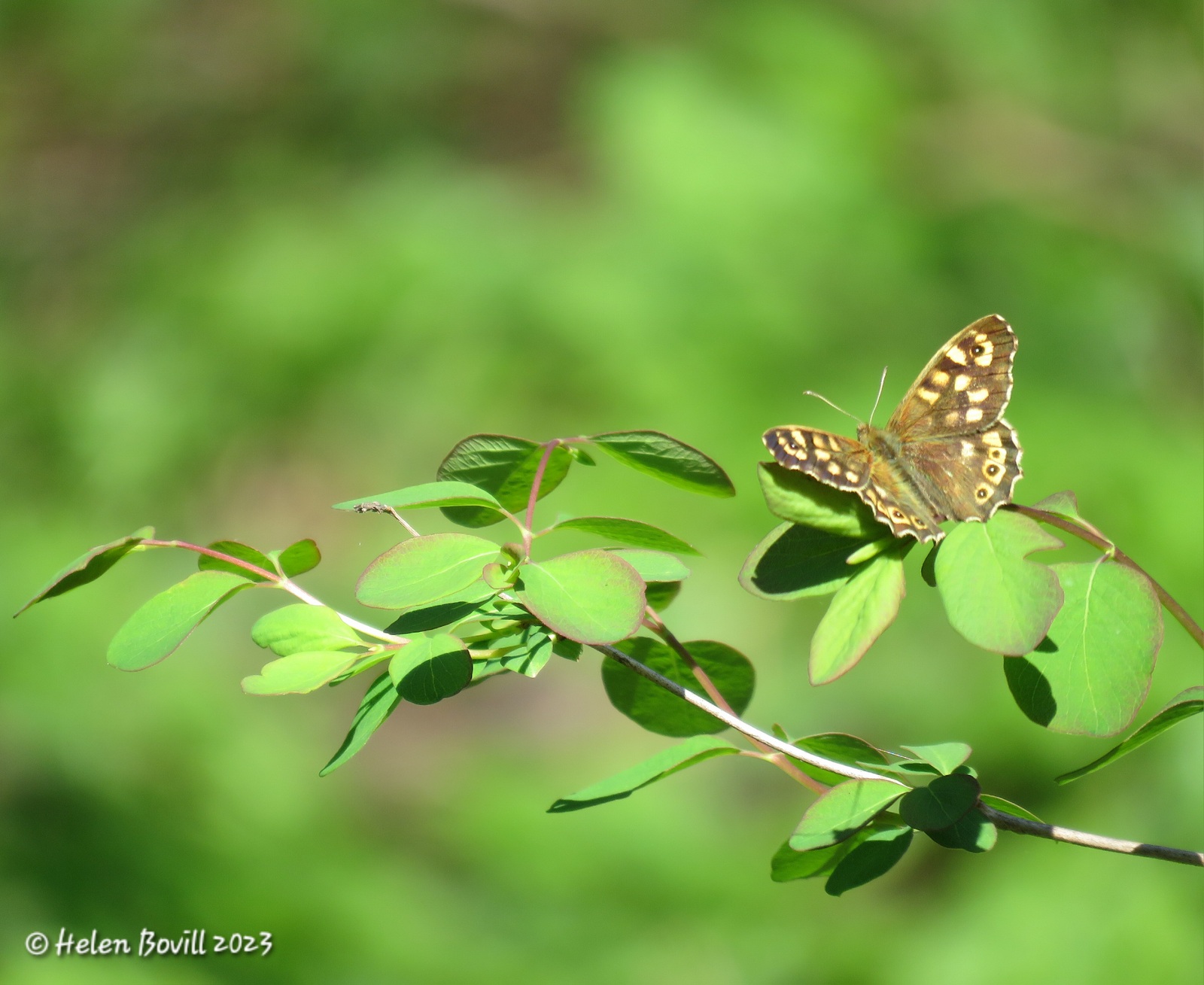
The differences between Small and Large Whites can sometimes be hard to see at this time of year because the markings on the Spring brood can be quite faint. The male Small White has one black spot on each upper wing and the female has two. I’ve noticed that the innermost of those two spots can look like it’s divided into two, but all the reference material I’ve seen regards it as just one spot.
The male Large White has no spots and again the female has two. Whilst it’s therefore easy to tell male Small and Large Whites apart, it’s harder in the females because both have two spots. The dark band on the edge of the wings is a good indicator of which species you’re looking at. It doesn’t extend as far along the edge of the Small White’s outer wing as on the Large White, where the band extends further around and is shaped rather like a boomerang.
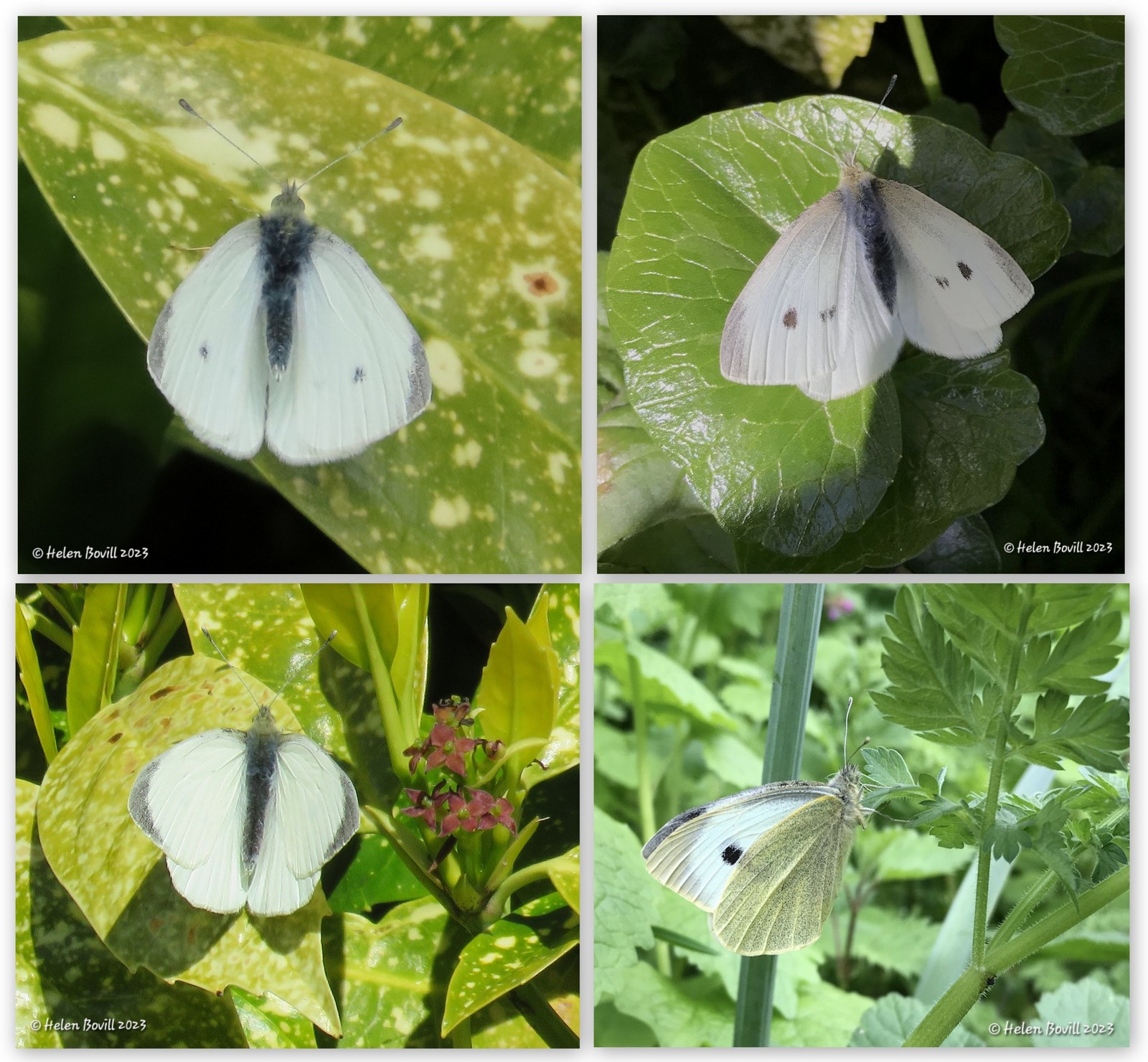
Another butterfly where the males and females are different (known as sexual dimorphism) is the Orange-tip. This is a male – the females lack the orange tips. And when I checked the photo, I saw the tops of his legs are covered in fine hairs, something I hadn’t noticed before.
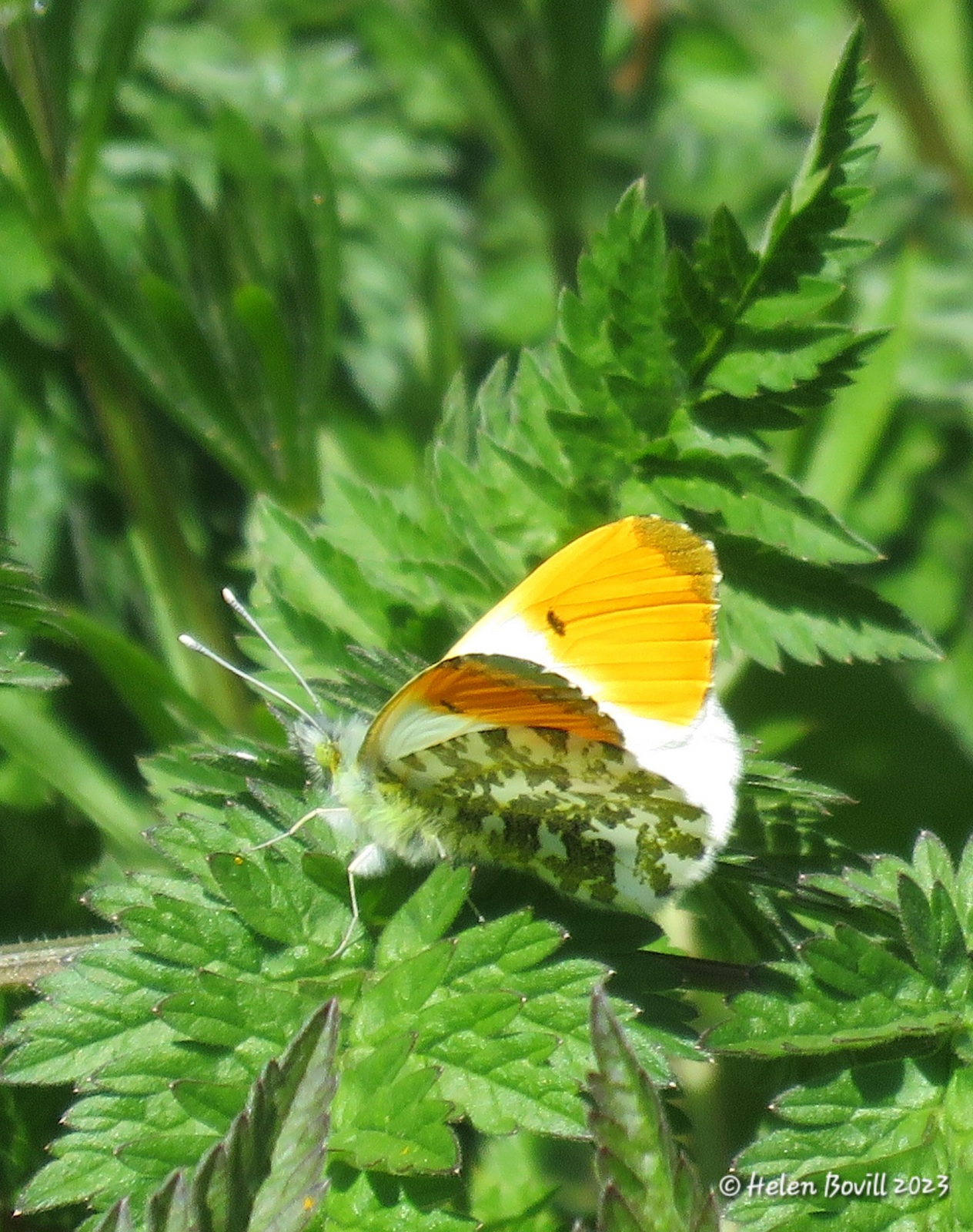
Sexual dimorphism also occurs in the beautiful little Holly Blue.
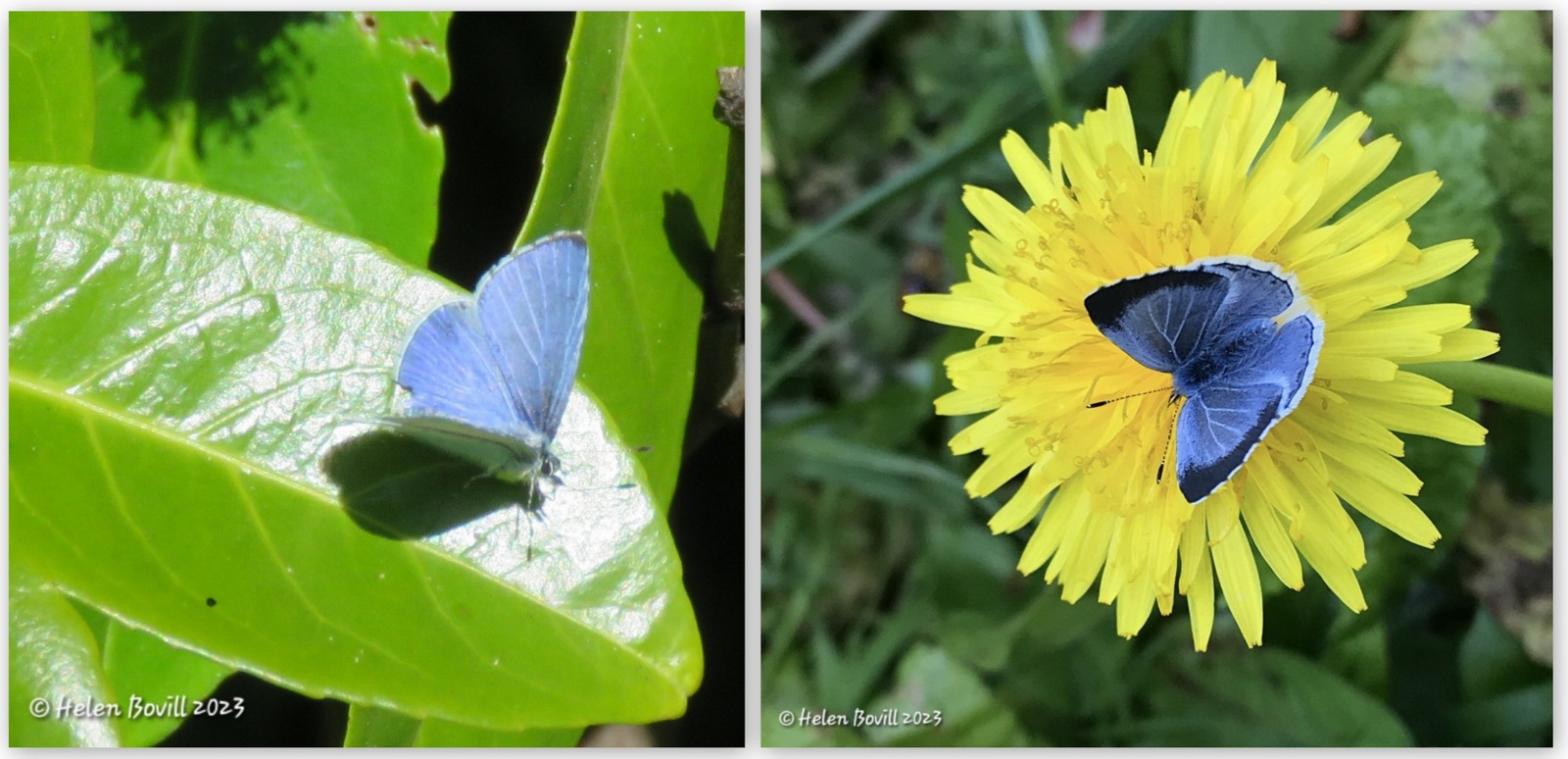
It also occurs in the Brimstone. Those differences are most noticeable when the butterfly is flying, because the males look bright yellow whereas the females are almost white. At rest, and especially in bright sunshine, it can be hard to tell them apart because both have quite colourful underwings. But generally the female is a pale shade of green and the male is a slightly darker, yellower shade of green.
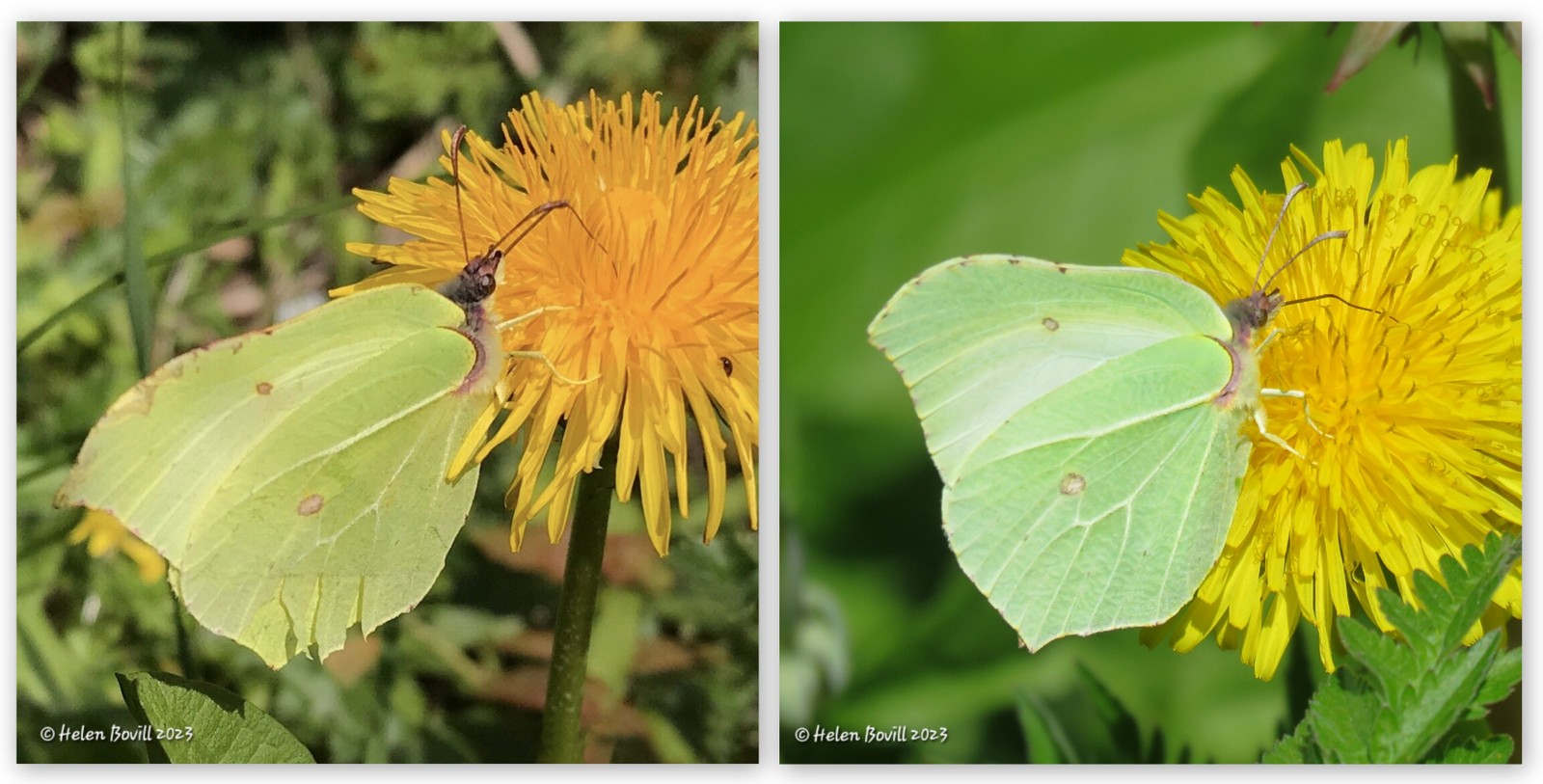
The last species of Butterfly I saw for the first time this year was a Green-veined White. It was in the central part of the cemetery near the new Larkin commemorative bench. This is another species that shows sexual dimorphism – the males have either one spot or none.
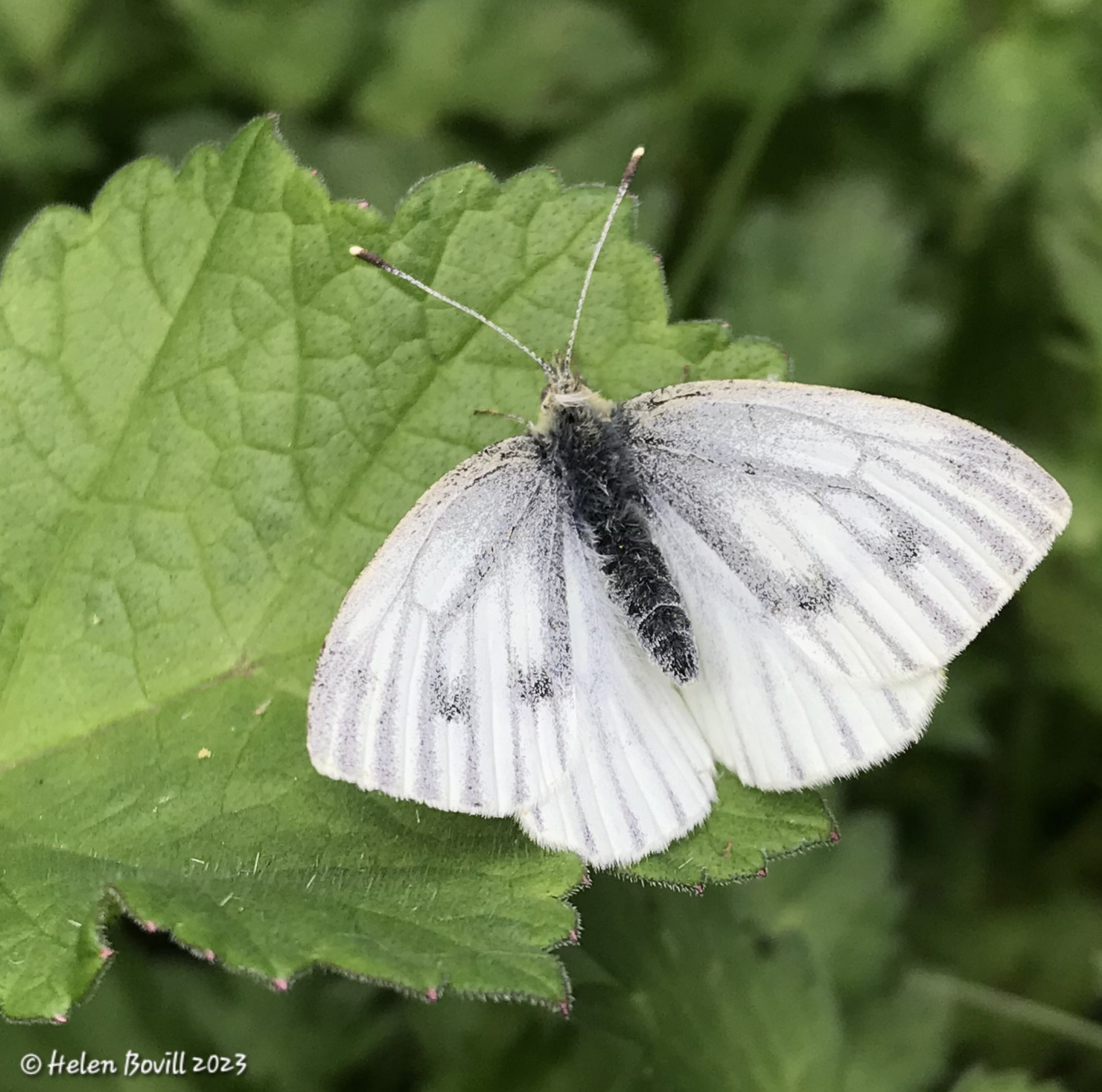
I’ve made several wildlife posts on our Facebook page recently and it might therefore seem that the cemetery is teeming with butterflies! I do usually see at least three different species on each sunny day but usually only in ones and twos. Nevertheless, it is still a real joy to see them, feeding on all the flowers. Interestingly I looked back on my report for April last year, and although it had been a much drier month, I’d still managed to see 10 different species of butterfly by then.
Bees and other insects
I’ve seen plenty of Bees of various kinds this month including Red, White and Buff-tailed Bumblebees, Honeybees, Hairy-footed Flower Bees and lots of Tawny Mining Bees. The first photo shows one that’s emerged from its burrow. The next photos show one making a burrow underground in which to lay its eggs. This is one of our native species of solitary Bee.
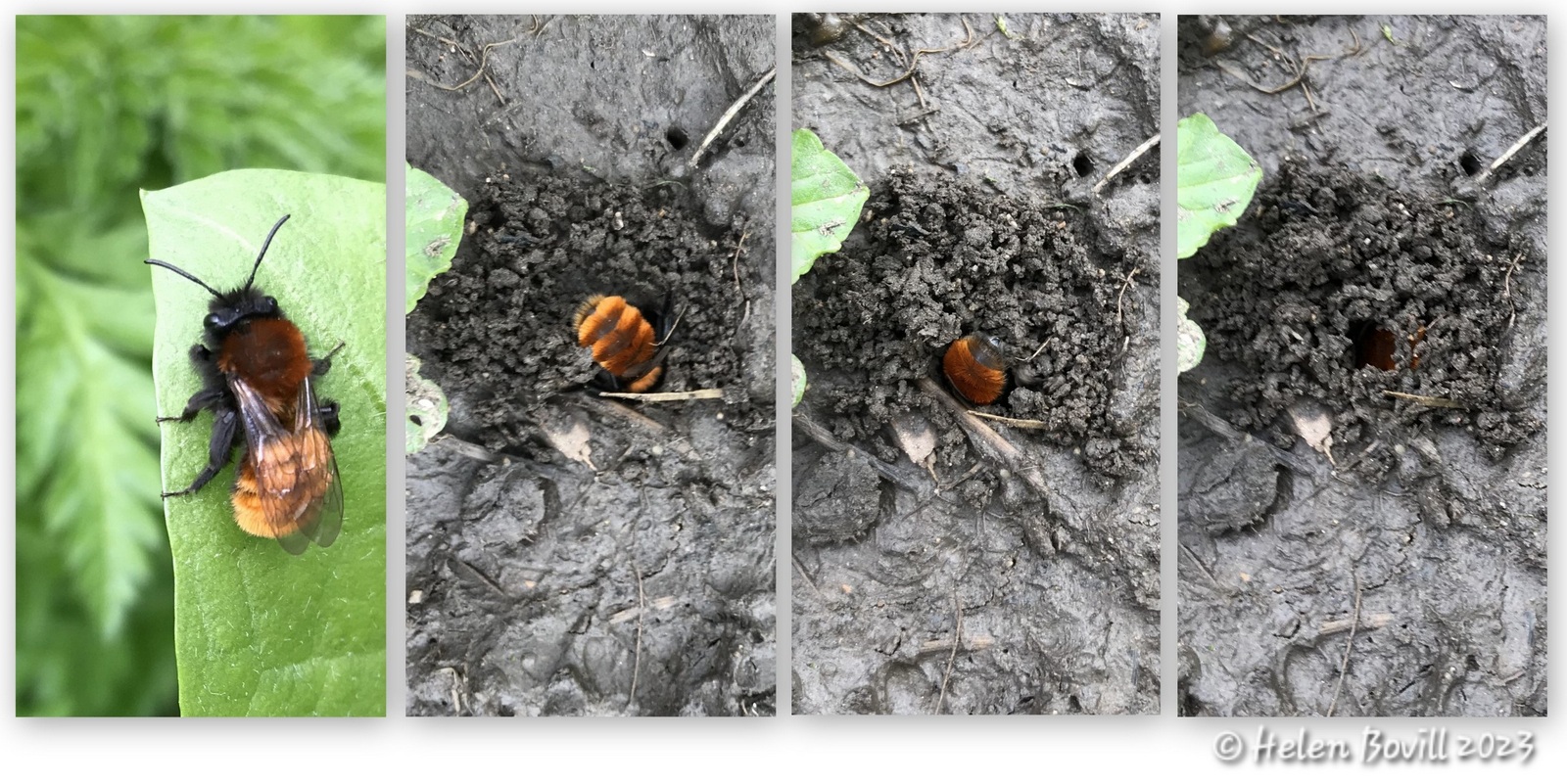
I’ve seen plenty of Bee-flies this month. Interestingly they’re a parasite of Tawny Mining Bees, laying their eggs in the Bee’s open burrow so that when they hatch the larvae can feed on the bee’s food and offspring.
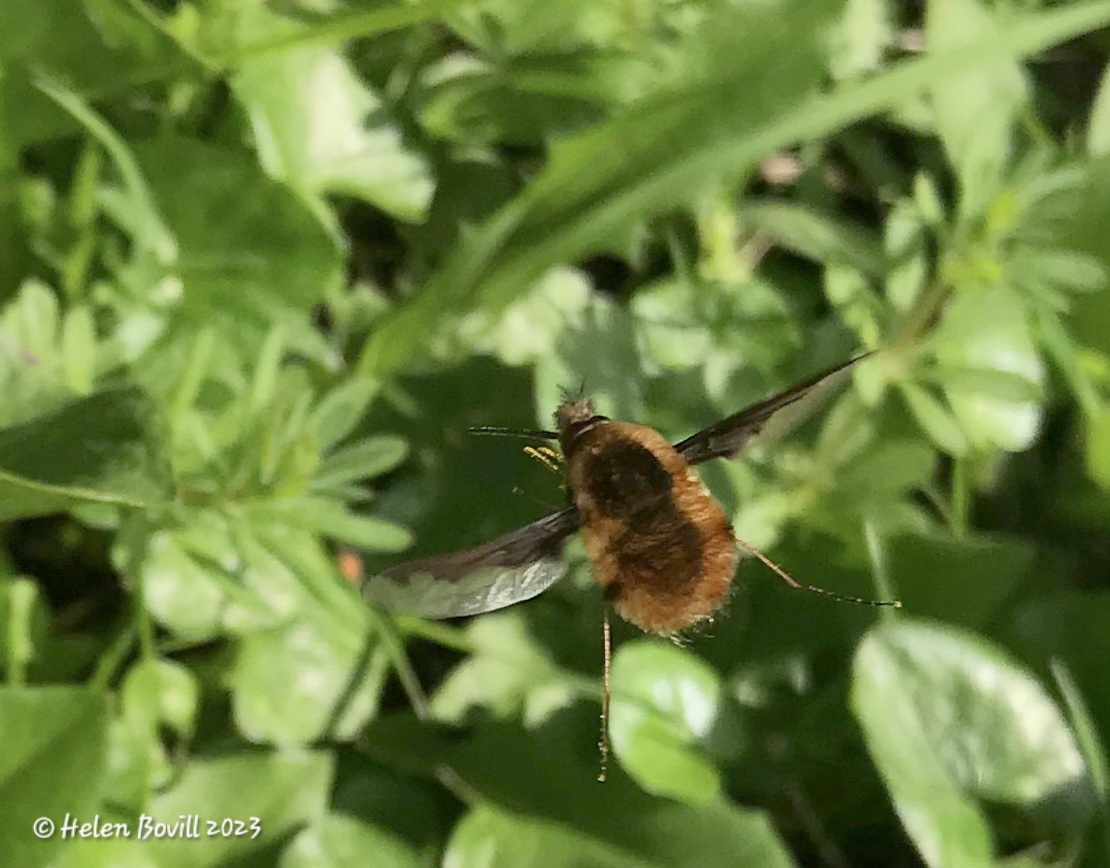
I’ve also seen Wasps, Hoverflies, flies and lots of other very small insects. I also caught a brief glimpse of a Hummingbird Hawk-moth on two occasions this month, the first one I’ve ever seen in the Cemetery! It’s a day-flying month and although this is a migrant species, we also have several native species of day-flying moths. It’s a fact that in the UK there are more species of day-flying moths than there are species of butterfly!
I also saw lots of Ladybirds this month. Most of them were our native Seven-spot ones but I also saw some non-native Harlequins.
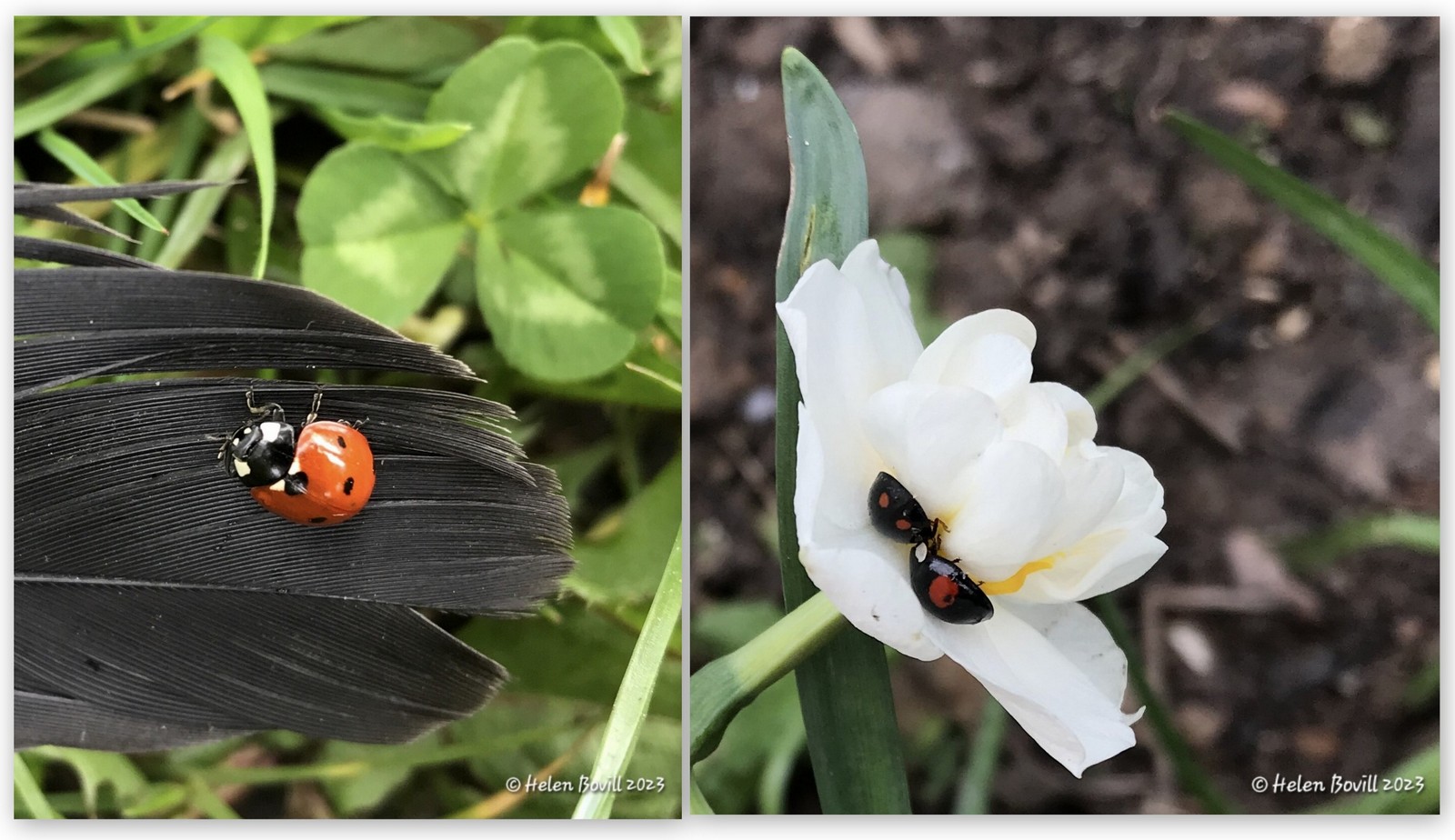
Plants and Flowers
Smaller ones
March has been an excellent month for wildflowers. The ones planted by the volunteers on the grass verge last year are now starting to flower, such as this Cowslip.
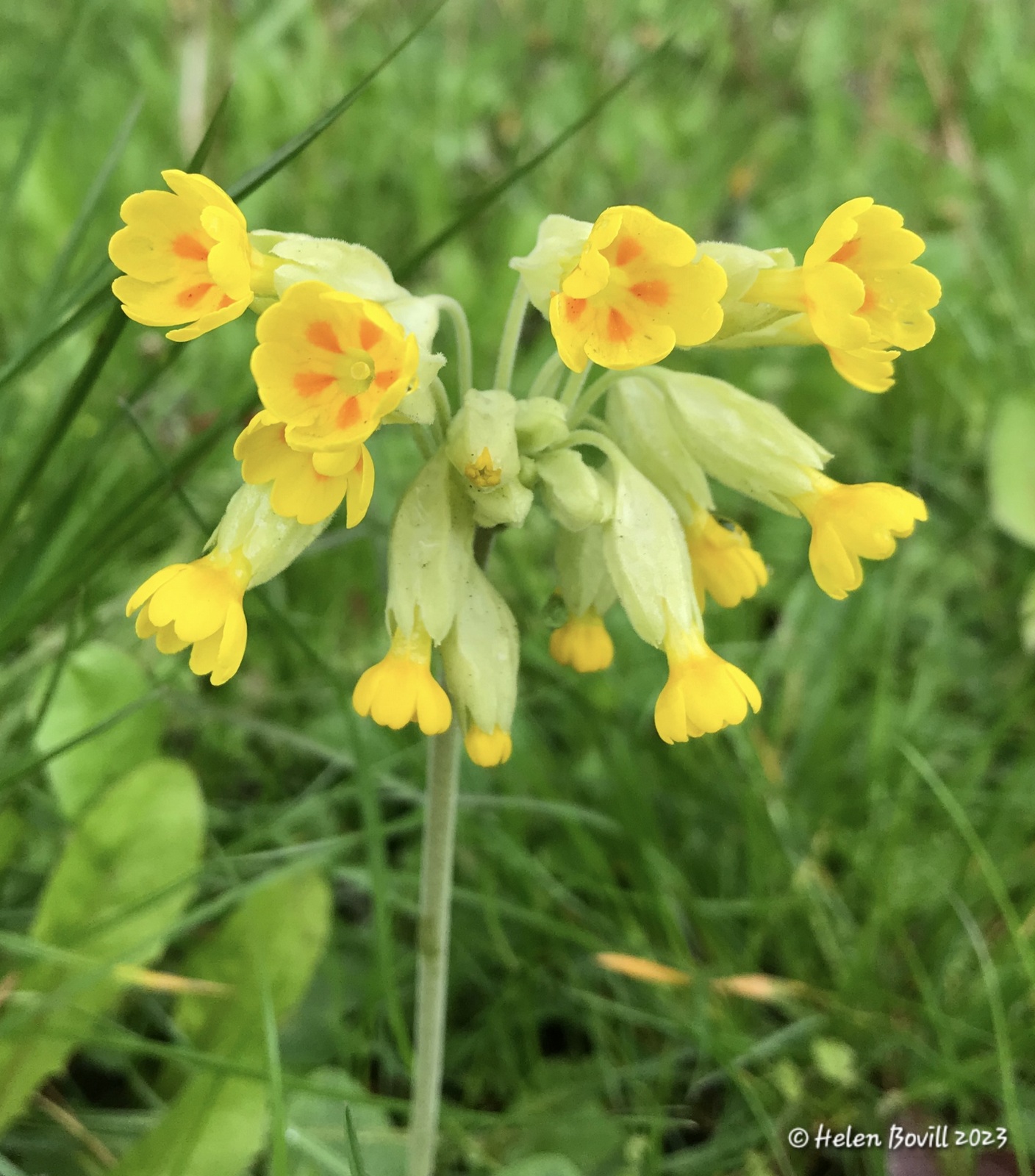
Inside the cemetery, especially in the darker shaded areas, Hogweed is now starting to flower. Note how the buds are a dark pink colour before opening up to reveal their characteristic white flowers.
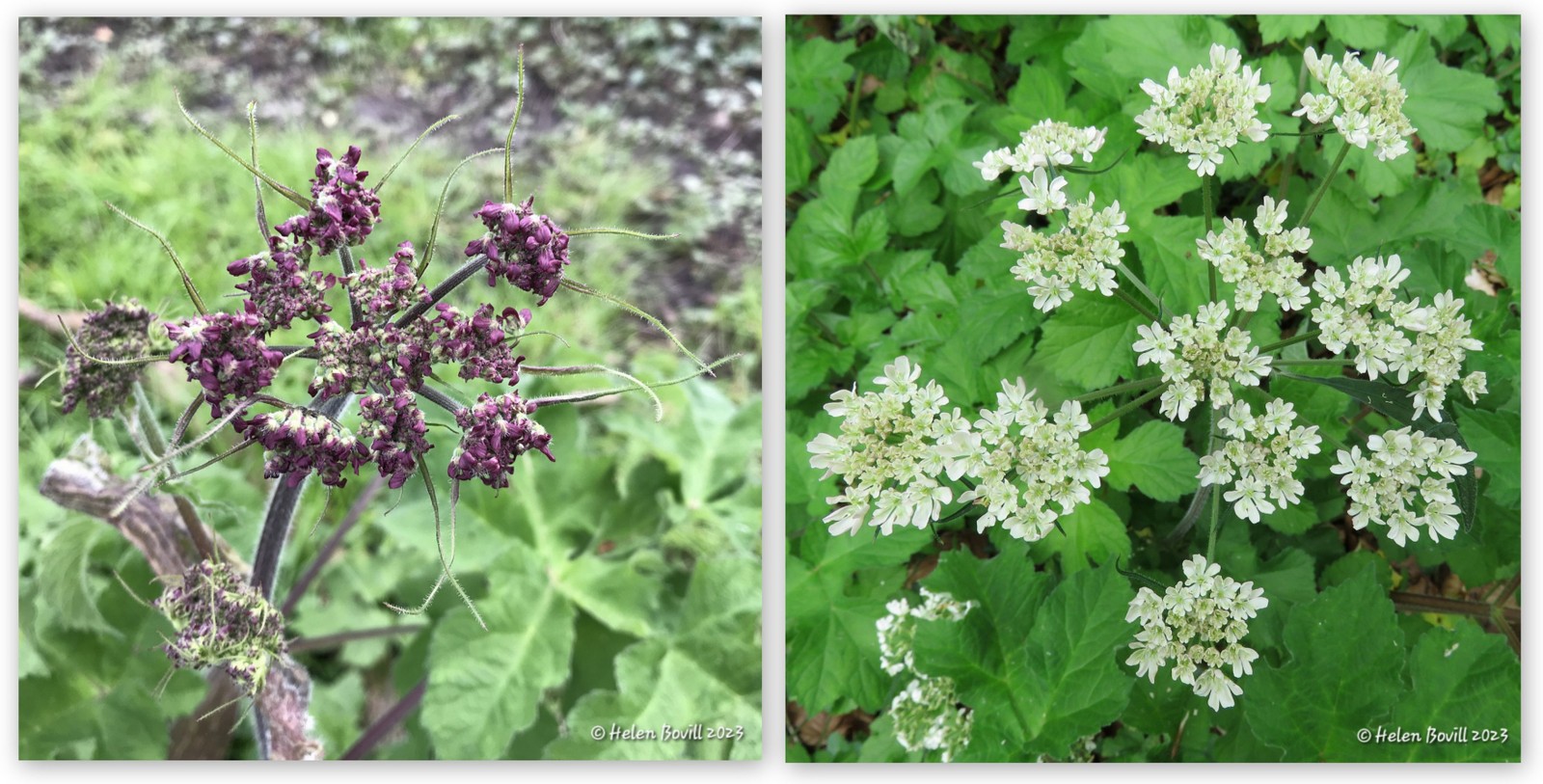
Yellow is still the dominant flower colour in the cemetery. There are still some Celandines to be seen, especially in the cemetery, but the Dandelions are in full bloom now as you can see from some of the above photos. I also found this unusual double Dandelion.
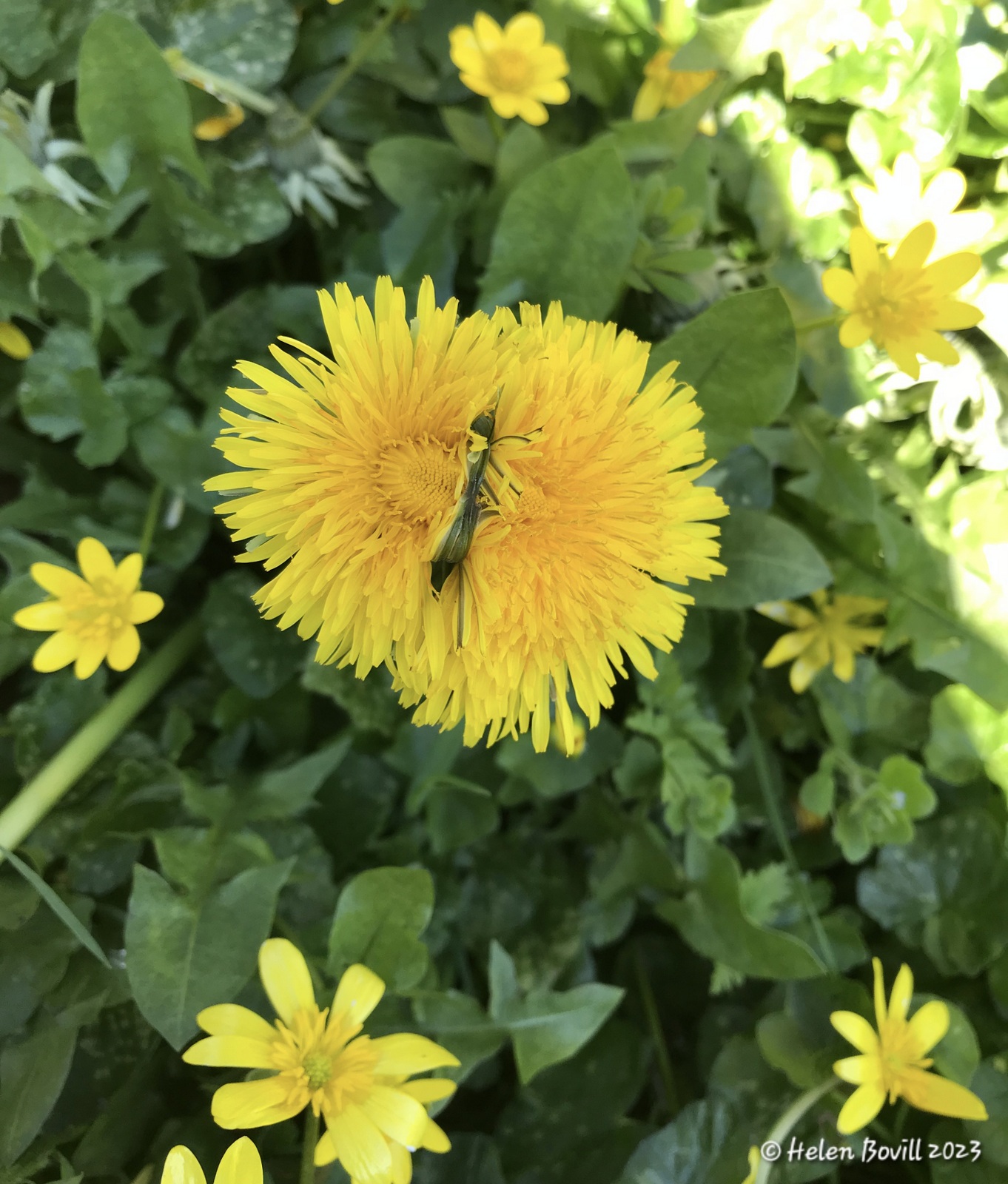
These are all an excellent source of food for the insect branch of the cemetery wildlife. I also found a small patch of Yellow Archangel, and plenty of Wood Avens and Common Chickweed.
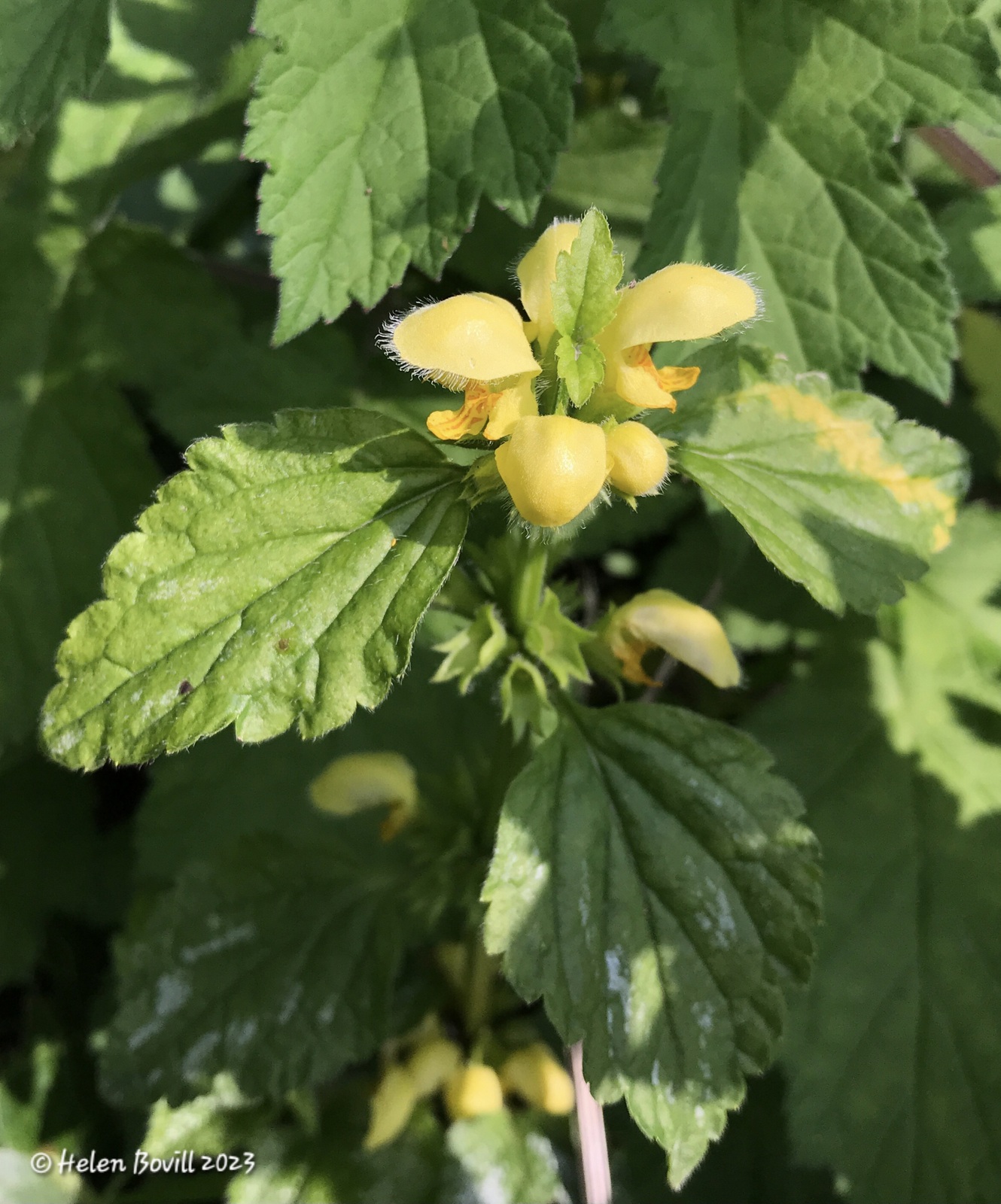
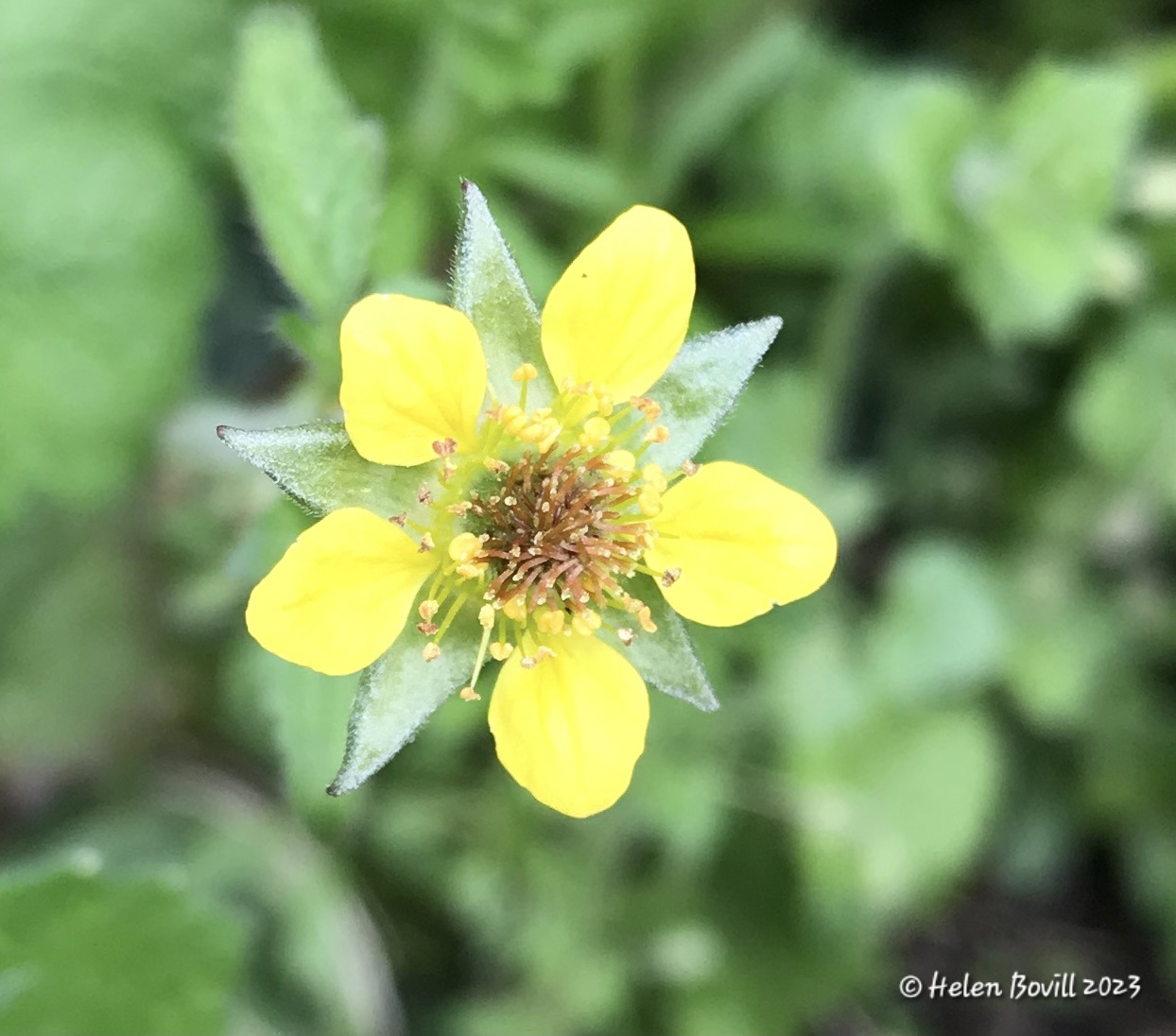
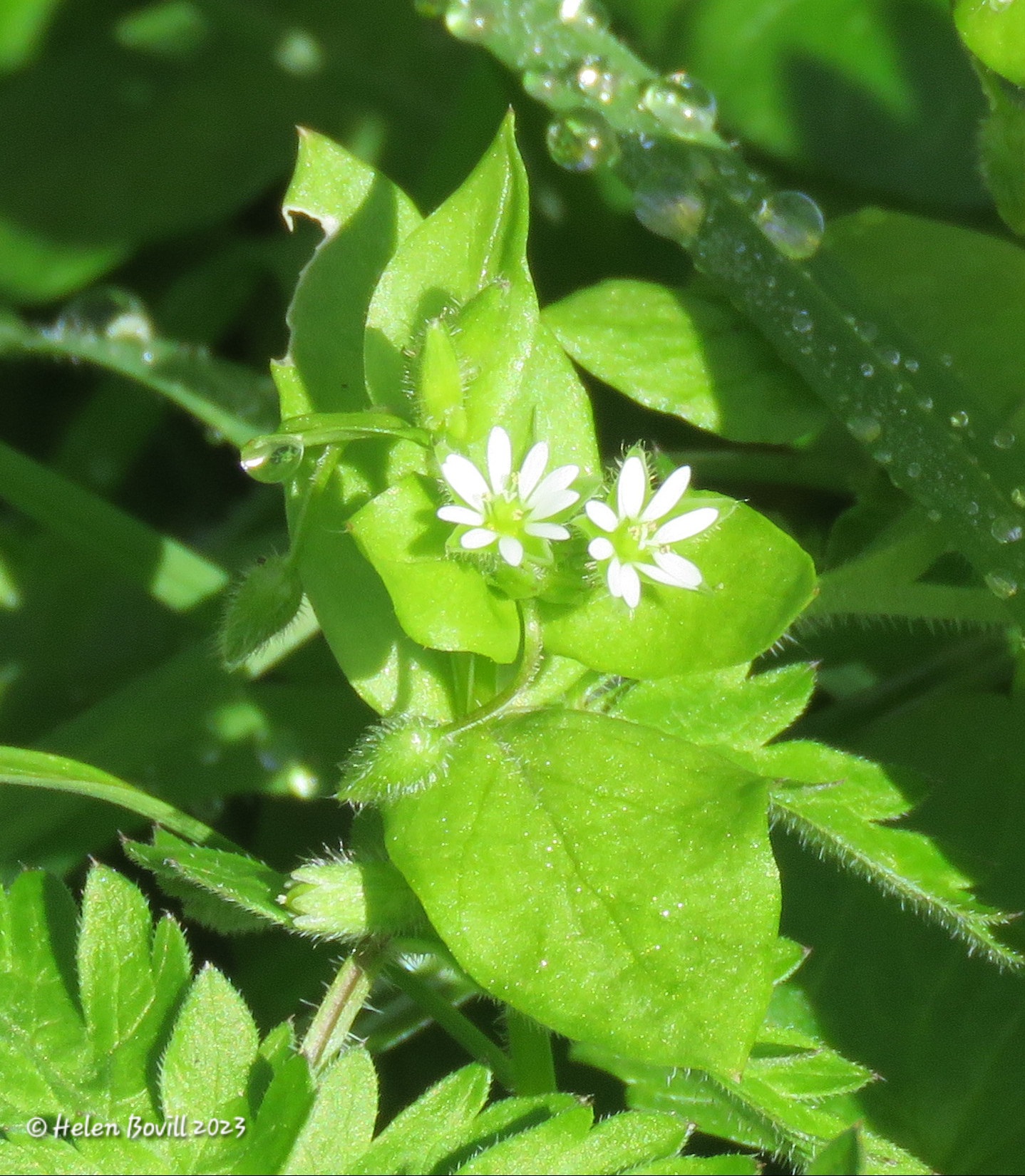
The Bluebells have now started to flower but their peak time is in May so I’ll talk about them a bit more next month.
Trees
When we think of flowers, we usually think of the ones that look like those in my previous photos. But trees also have flowers although they look quite different in appearance and colour. During the recent windy weather a lot of the tree flowers had fallen onto the ground, including several clusters of flowers from a Norway Maple.
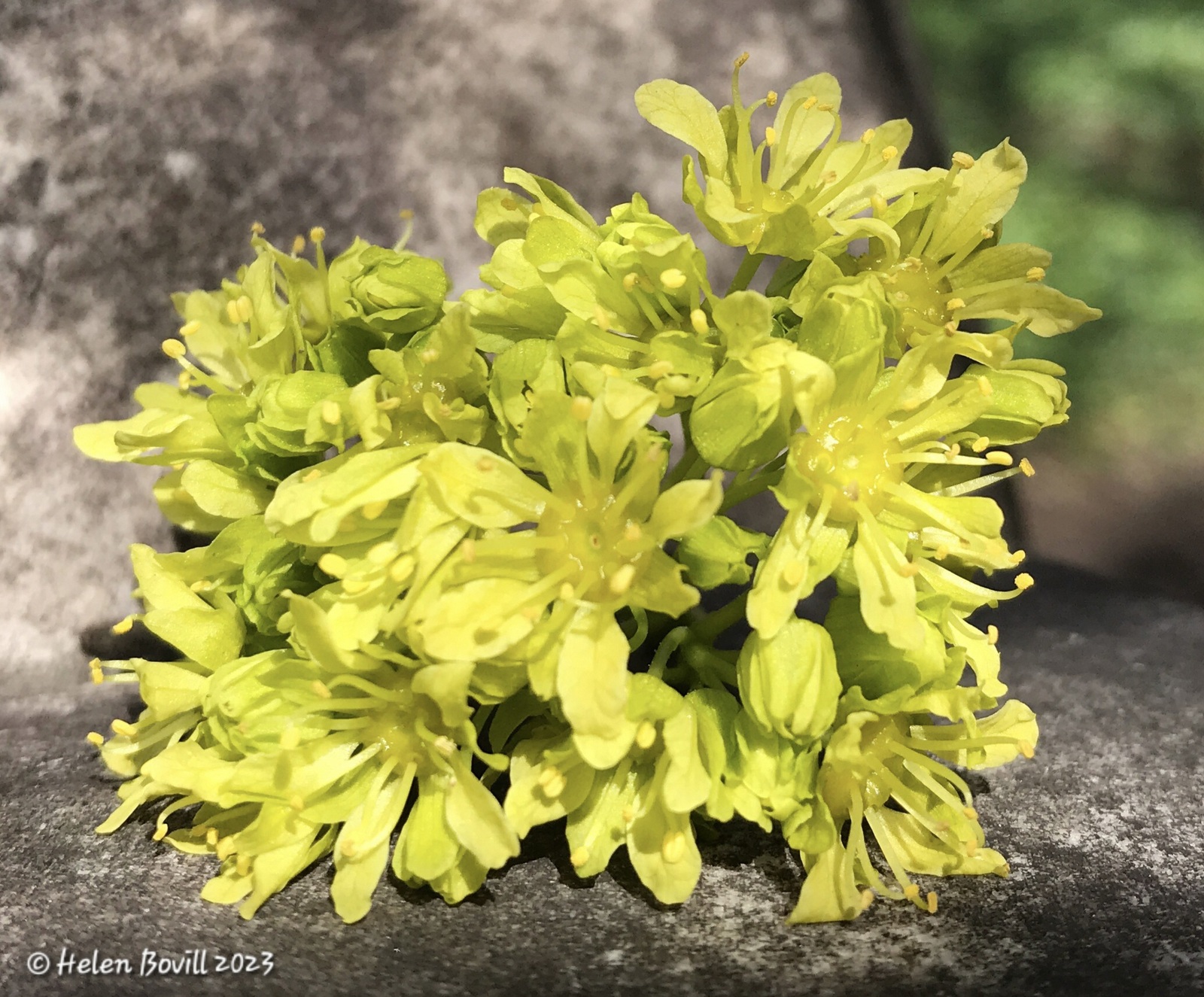
The flowers of some trees are known as catkins. The Hornbeam is monoecious, meaning it has male and female catkins on the same tree. The male catkins are the largest – I’ve marked one of the smaller female ones with an arrow.
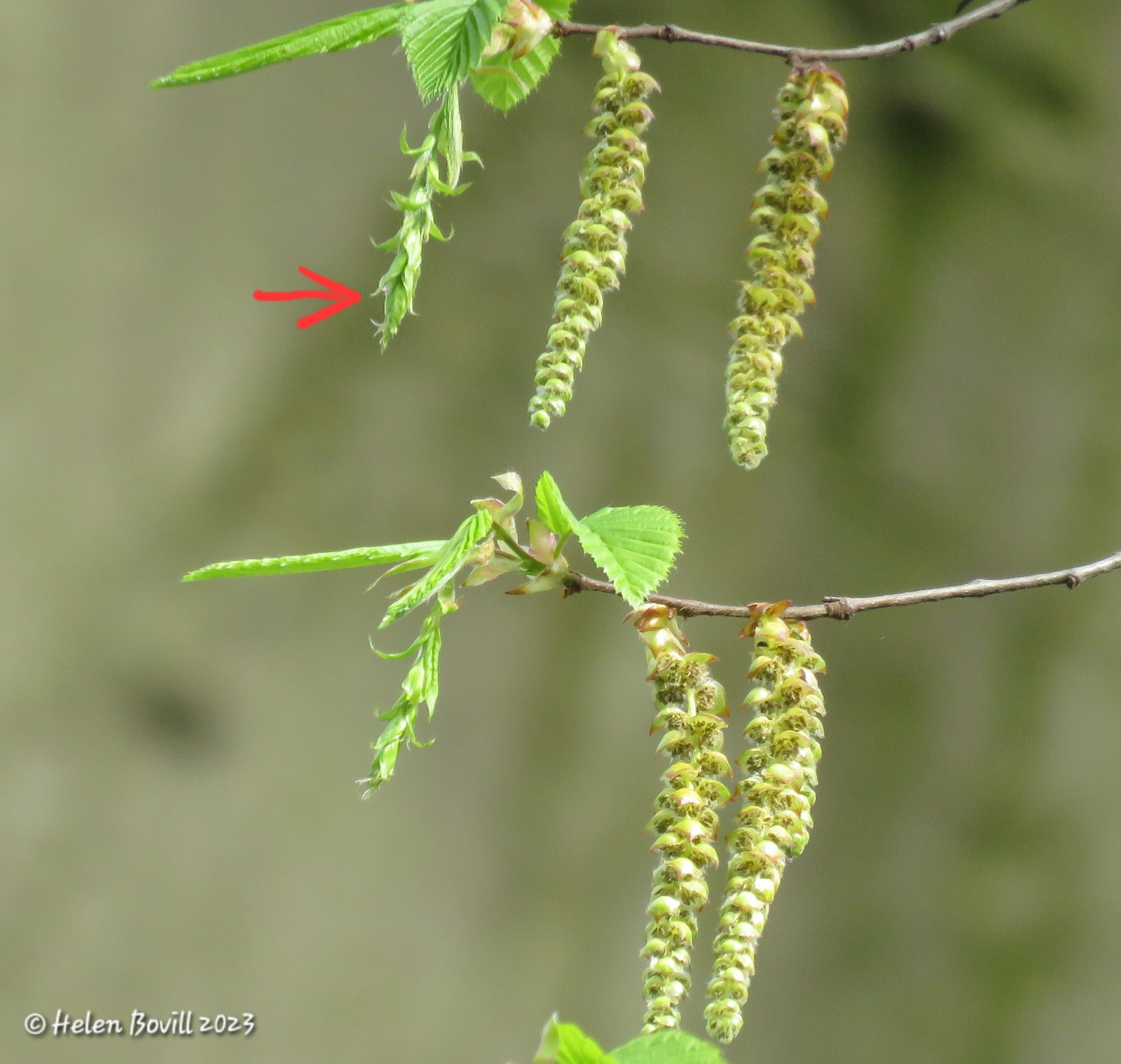
You can also see the flowers of the Spotted Laurel on the white butterfly photo – bottom left.
Birds
I haven’t seen anything unusual this month. The regular species are busy gathering nest material and marking out their territories – the Great Tits are particularly loud at the moment.
Another bird with a very distinctive call is the Chiffchaff, which I always hear before I see it, singing from very high up in the trees and from quite early in the morning too.
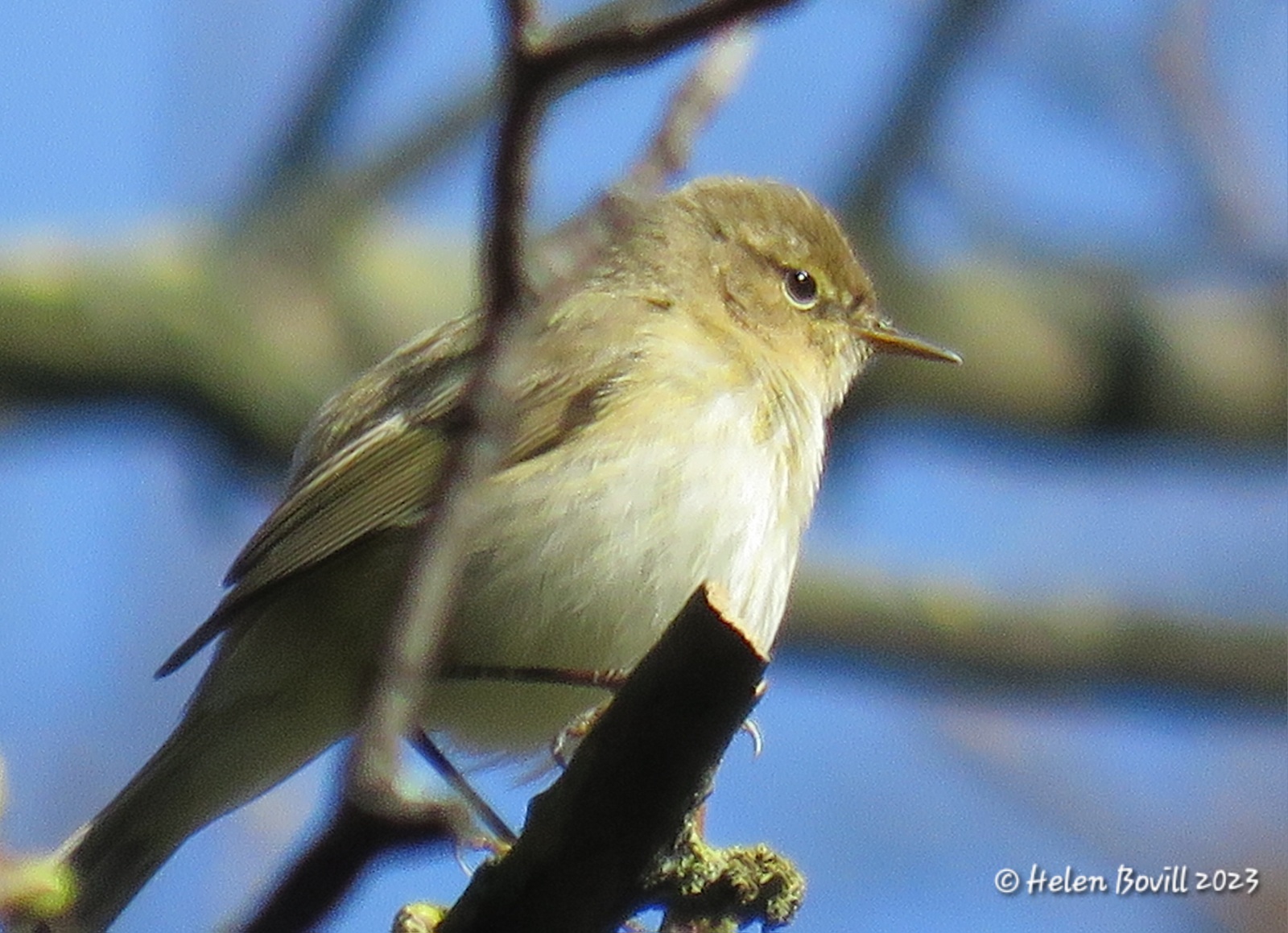
Other small birds around in good numbers are Blue Tits, Chaffinches, Robins, Blackbirds and Long-tailed Tits. I’ve also seen Wrens, Goldfinches, Dunnocks and I also caught a quick glimpse of two Treecreepers. I haven’t seen any Coal Tits this month though.
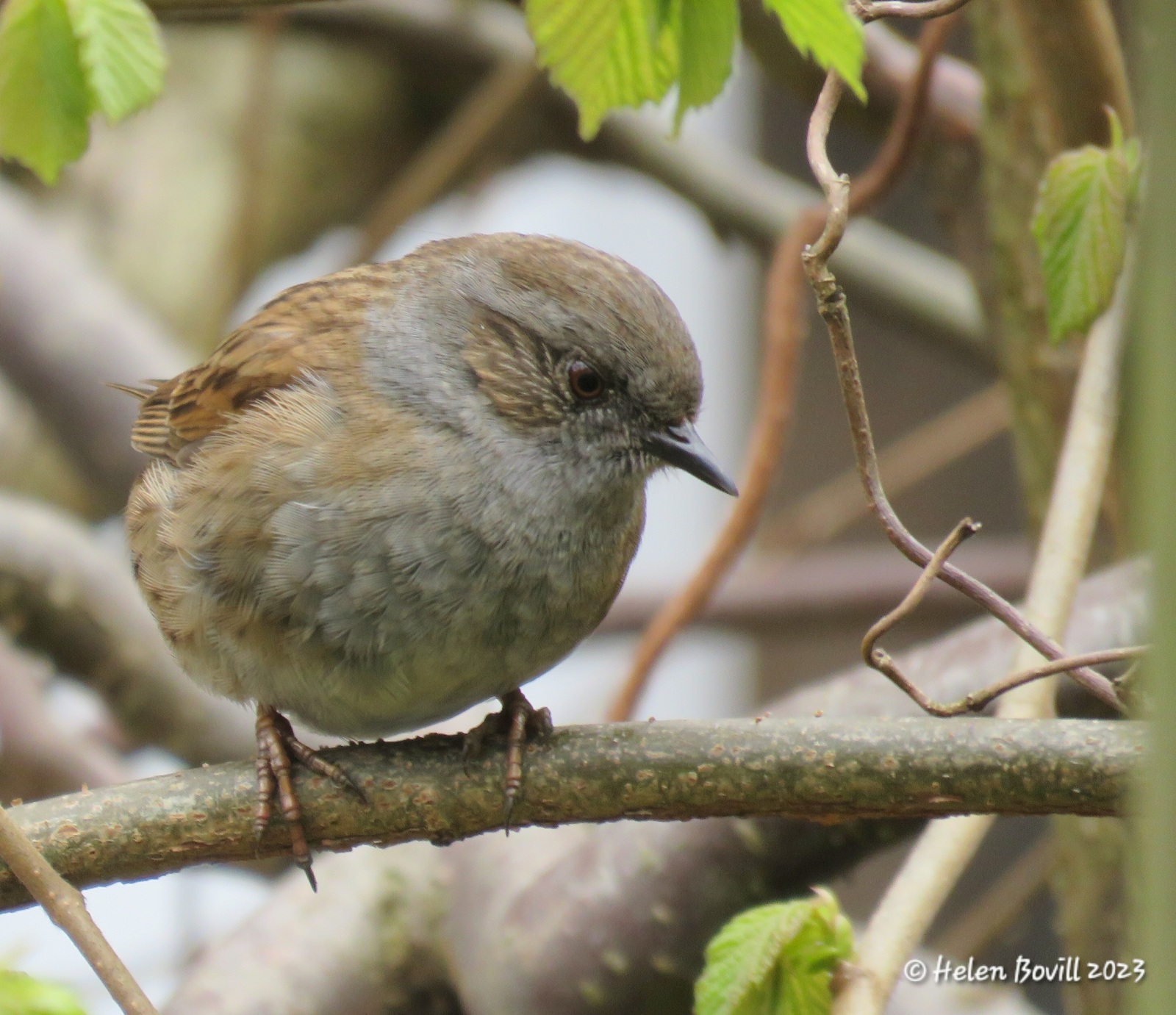
Of the larger birds, I’ve seen Wood Pigeons, Stock Doves, Carrion Crows and Magpies.
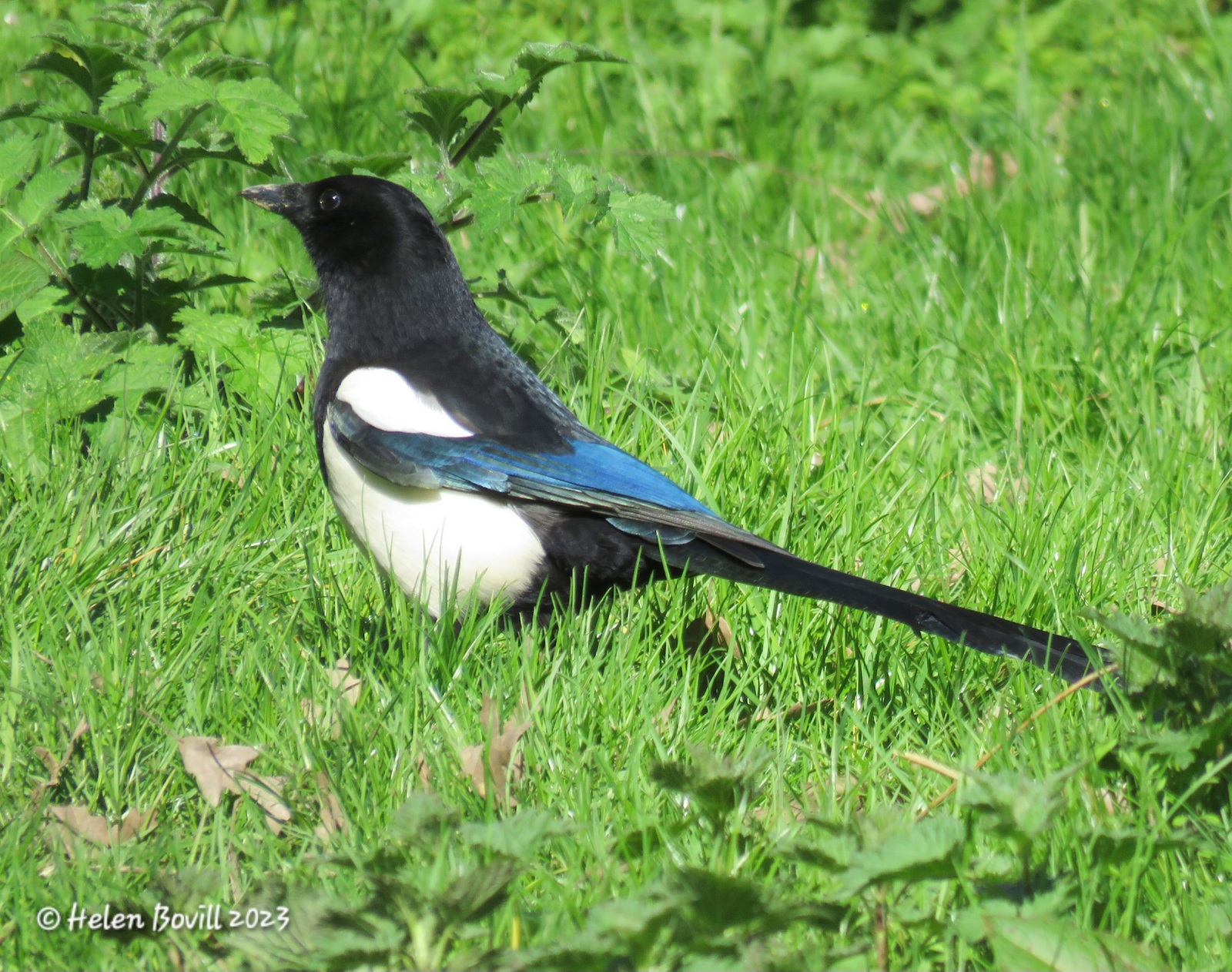
Fungi
Not much to report this month, apart from some Jelly Ear growing on an old fallen branch and a bracket of some type growing high up in a tree. The Velvet Shank that I used to see every day has all but disappeared, probably eaten by the cemetery wildlife!
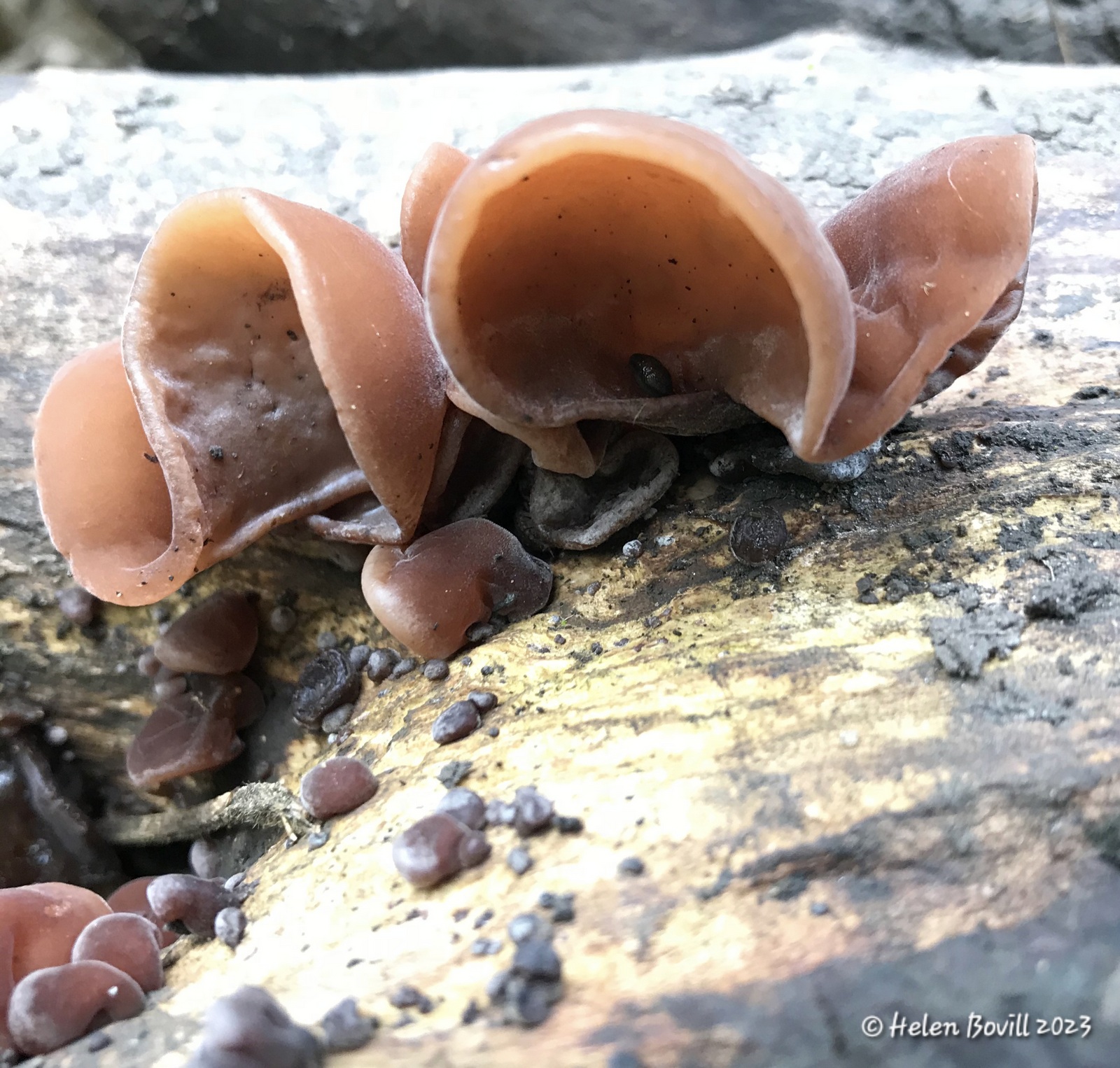
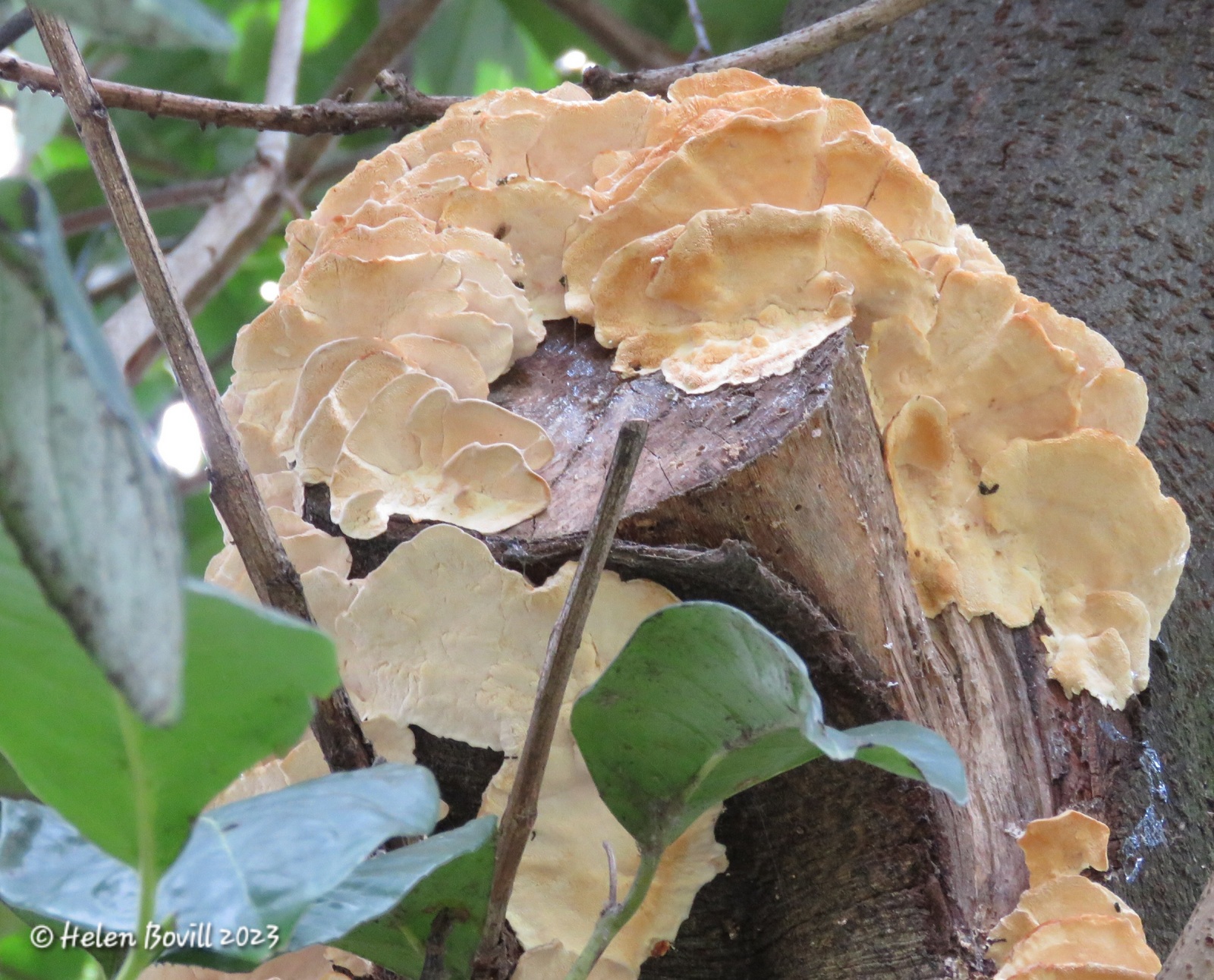
Conclusion
April has been a great month for the cemetery wildlife, with lots of colour and activity to be seen. I managed to spend plenty of time walking in the cemetery and along the grass verge, especially on sunny days – here’s a collection of some of the photos I took on just one of those morning walks.
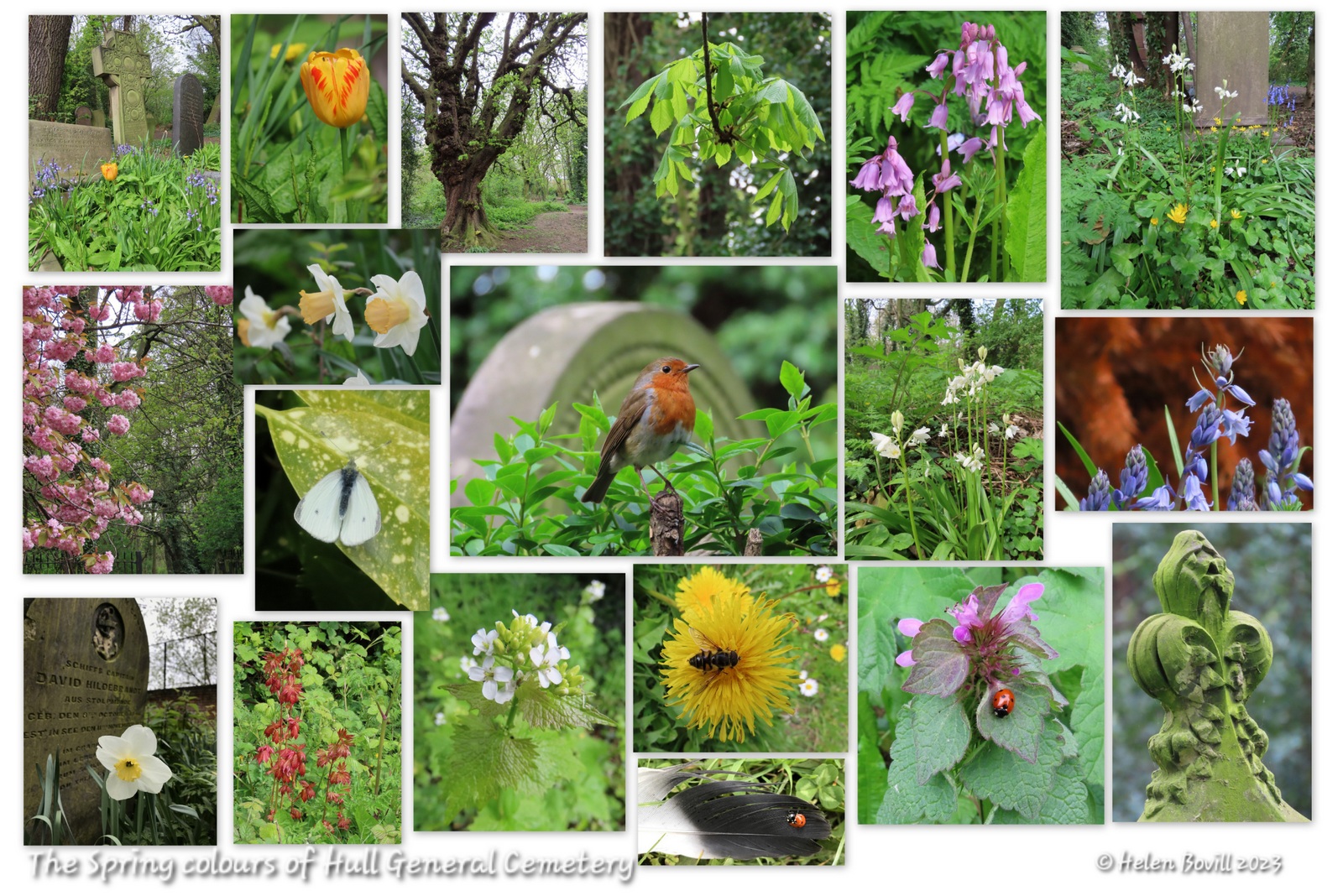
And finally, there’s still time to take part in the City Nature Challenge 2023 – details below – for you to record not just the cemetery wildlife but any you see in your gardens in Hull!
https://www.inaturalist.org/projects/city-nature-challenge-2023-hull


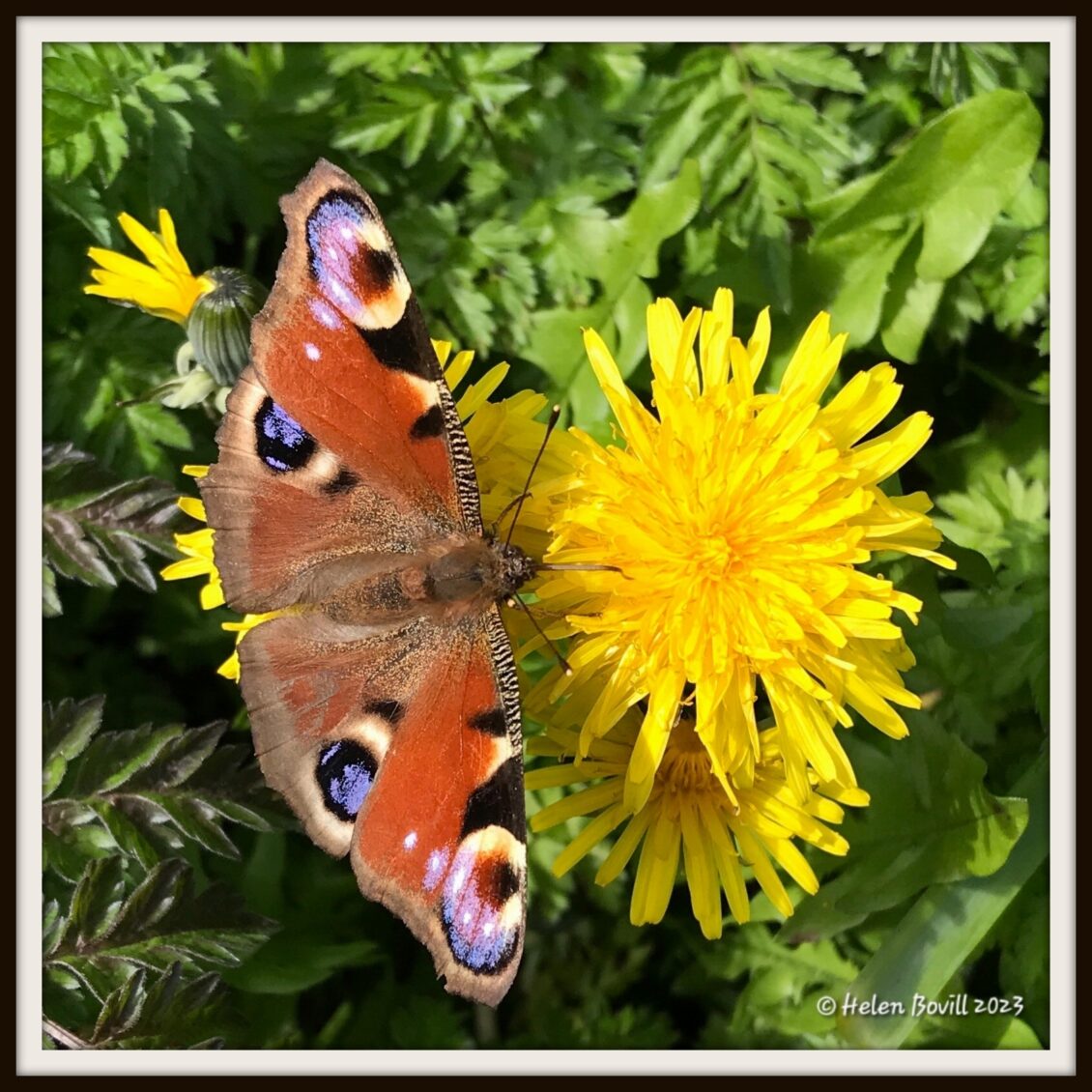
Yet another great post Helen, always amazes me how many different species of wildlife are in the cemetery. Thanks for posting.
fascinating Helen. so much detail x
Amazing photos and so much knowledge shared, thank you!
Great detailed report, Helen. Cheered me up no end.
Great detailed report, Helen. Cheered me up no end.